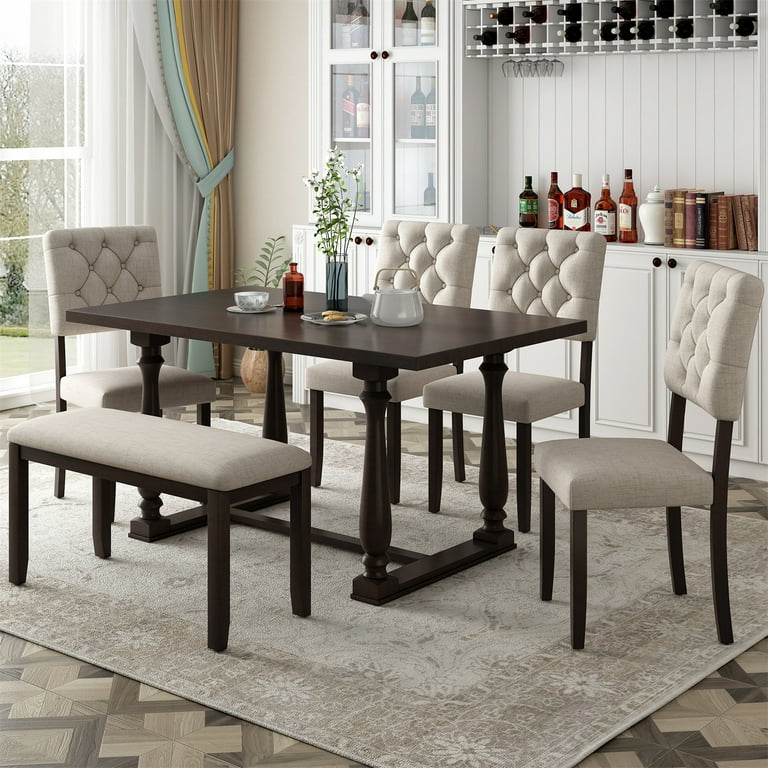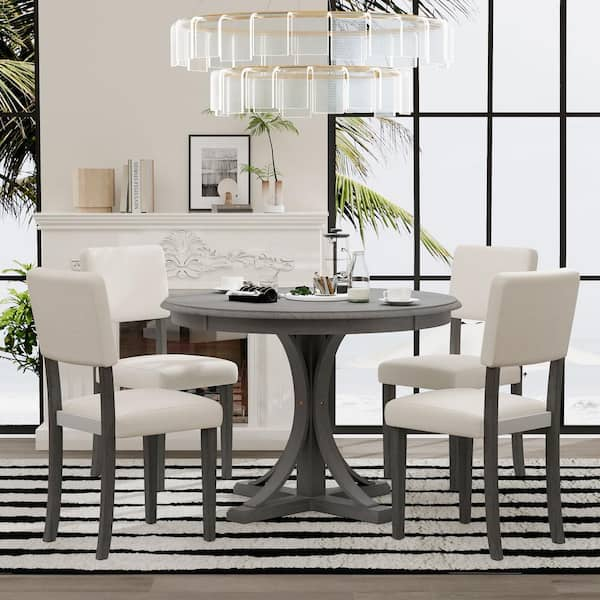Simple Steps to Replacing Old Dining Room Table Legs with New Ones
Simple Steps to Replacing Old Dining Room Table Legs with New Ones
Blog Article
How to Select the Perfect Dining-room Table Legs for Your Home Design
Selecting the suitable eating space table legs is a nuanced process that needs careful consideration of numerous elements, including your area restraints, visual preferences, and functional requirements. The interplay in between measurements, styles, and materials can dramatically affect the setting of your dining area, making it essential to approach this decision systematically.
Assess Your Dining Area
Evaluating your eating space is important for selecting the right table legs that enhance both appearances and capability. Begin by gauging the dimensions of your dining location, including ceiling elevation, floor room, and proximity to various other furniture. This details will aid establish the appropriate size and elevation of your eating table, which straight affects the choice of table legs.
Following, take into consideration the style and layout of your dining area. An open-concept design might benefit from table legs that offer visual agility, such as slender steel or acrylic options. Alternatively, a more traditional setting may ask for sturdy wooden legs that give a sense of durability.
Review the existing shade palette and materials in your eating location. Harmonizing the table legs with these aspects produces a cohesive look that enhances the general style.
Inevitably, an extensive analysis of your eating space will lead you in making an educated decision, making certain that your table legs not just enhance the aesthetic charm but also serve sensible purposes.
Consider Your Design Preferences
When choosing dining room table legs, it is necessary to review your personal style preferences, as they significantly affect the total aesthetic of your dining room. Your option of table legs can either complement or contrast with existing décor, making it essential to straighten them with your favored interior style theme.
If your home leans towards a modern visual, take into consideration smooth steel or minimal wooden legs that supply a tidy, minimalist look. For a much more standard strategy, ornate wooden legs with detailed carvings can include a touch of sophistication and class. Industrial designs take advantage of robust, basic materials such as redeemed timber and metal combinations, mirroring a sturdy beauty.
Additionally, farmhouse and rustic styles typically prefer sturdy, chunky legs that stimulate a feeling of warmth and convenience. Alternatively, if your décor is eclectic, you may select unique forms or a mix of products to develop aesthetic rate of interest.

Evaluate Product Options
The selection of product for eating space table legs plays a critical function in both longevity and aesthetic allure. Common products include wood, steel, and composite alternatives, each offering distinct features that can affect the general appearance and long life of your table.
Timber is a timeless selection, known for its warmth and adaptability. Hardwoods like oak and walnut supply outstanding strength and can be finished in different stains to match any type of style. Softwoods like yearn are more prone to dents and scrapes, making them much less suitable for high-traffic locations.
Steel legs, typically crafted from steel or aluminum, exude modernity and commercial appeal. They are immune and highly long lasting to put on, making them suitable for households with kids or constant events (dining room table legs). Additionally, steel can be completed in numerous colors, boosting the personalization possibilities
Composite materials, such as MDF or laminate, deal price and varied layouts. While commonly much less resilient than strong timber or steel, they can still offer a trendy look and are commonly easy to keep.
Eventually, the material you pick must straighten with your way of life, aesthetic preferences, and the degree of usage your eating table will certainly experience.
Determine Height and Dimension
Choosing the ideal height and size for your dining room table is vital for both capability and convenience. The standard elevation for dining tables usually ranges from 28 to 30 inches, enabling adequate legroom for a lot of individuals when seated. However, it is vital to consider the measurements of your eating room my website and the kinds of chairs you intend to utilize.

In addition, take into consideration the proportions of your dining space. A bigger table in a spacious area can create a grand setting, while a smaller table functions well in more intimate setups. Eventually, the ideal height and dimension will harmonize with your overall decor and improve the eating experience for you and your guests.
Explore Modification Opportunities

In addition, the design of the legs can be tailored to fit numerous styles, such as rustic, contemporary, or industrial. As an example, tapered legs can evoke a mid-century modern-day feeling, while beefy, block-style legs might resonate with traditional or farmhouse decor.
Homeowners can likewise explore shade finishes, from natural wood spots to repaint, enabling them to match or comparison with the table top and bordering decoration.
Moreover, leg elevation can be gotten used to accommodate specific seating plans or individual preferences, improving both convenience and performance.
Last but not least, special embellishments, such as makings or attractive braces, can additionally personalize the table legs, see this site making the eating experience not just a declaration yet a dish piece in the home. By taking into consideration these modification options, property owners can produce a dining area table that truly mirrors their uniqueness.
Final Thought
Picking the optimal dining-room table legs calls for mindful factor to consider of numerous aspects, including the dimensions of the dining room, style choices, product durability, and preferred height. Customization choices better enhance the capacity to accomplish a natural aesthetic that enhances the total design. By systematically examining these elements, house owners can ensure that the picked table legs not only satisfy practical needs but likewise add positively to the dining experience and atmosphere of the home.
Choosing the excellent eating space table legs is a nuanced procedure that requires careful factor to consider of numerous aspects, including your area restraints, visual choices, and functional demands.Assessing your dining area is vital for picking the right table legs that enhance both aesthetic appeals and performance.When figuring out size, determine the area where the table will certainly be put to guarantee it fits pleasantly, allowing for at least 36 inches of clearance around the table for easy movement. A bigger table in a large area can create a grand ambiance, while a smaller table functions well in even more intimate setups.Picking the optimal dining area table legs requires careful consideration of various factors, including the measurements of the eating area, design choices, material sturdiness, and preferred height.
Report this page